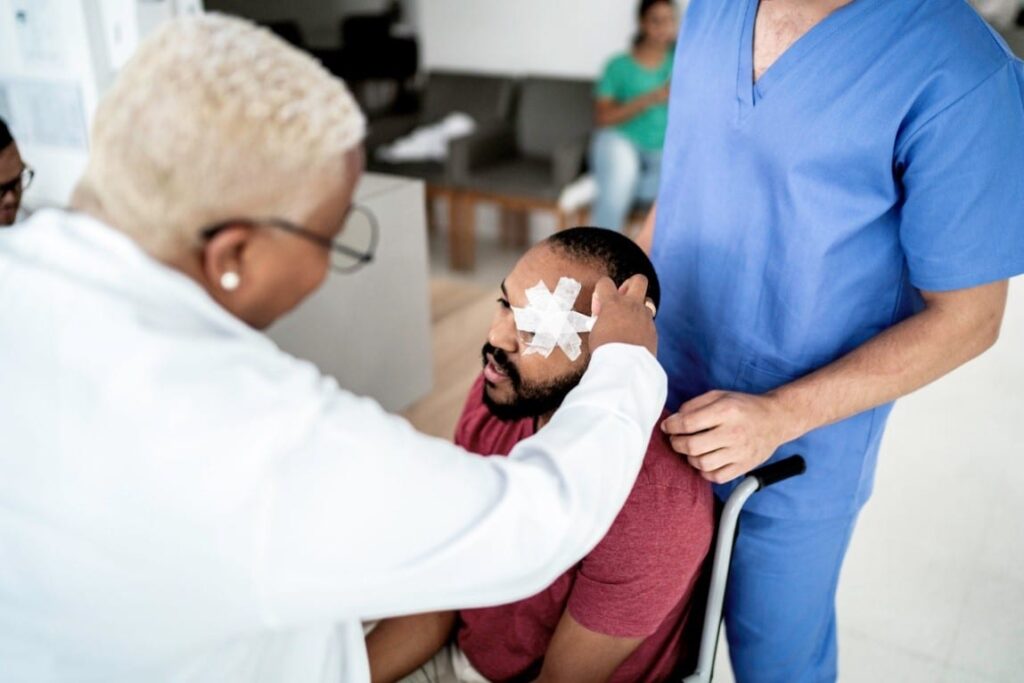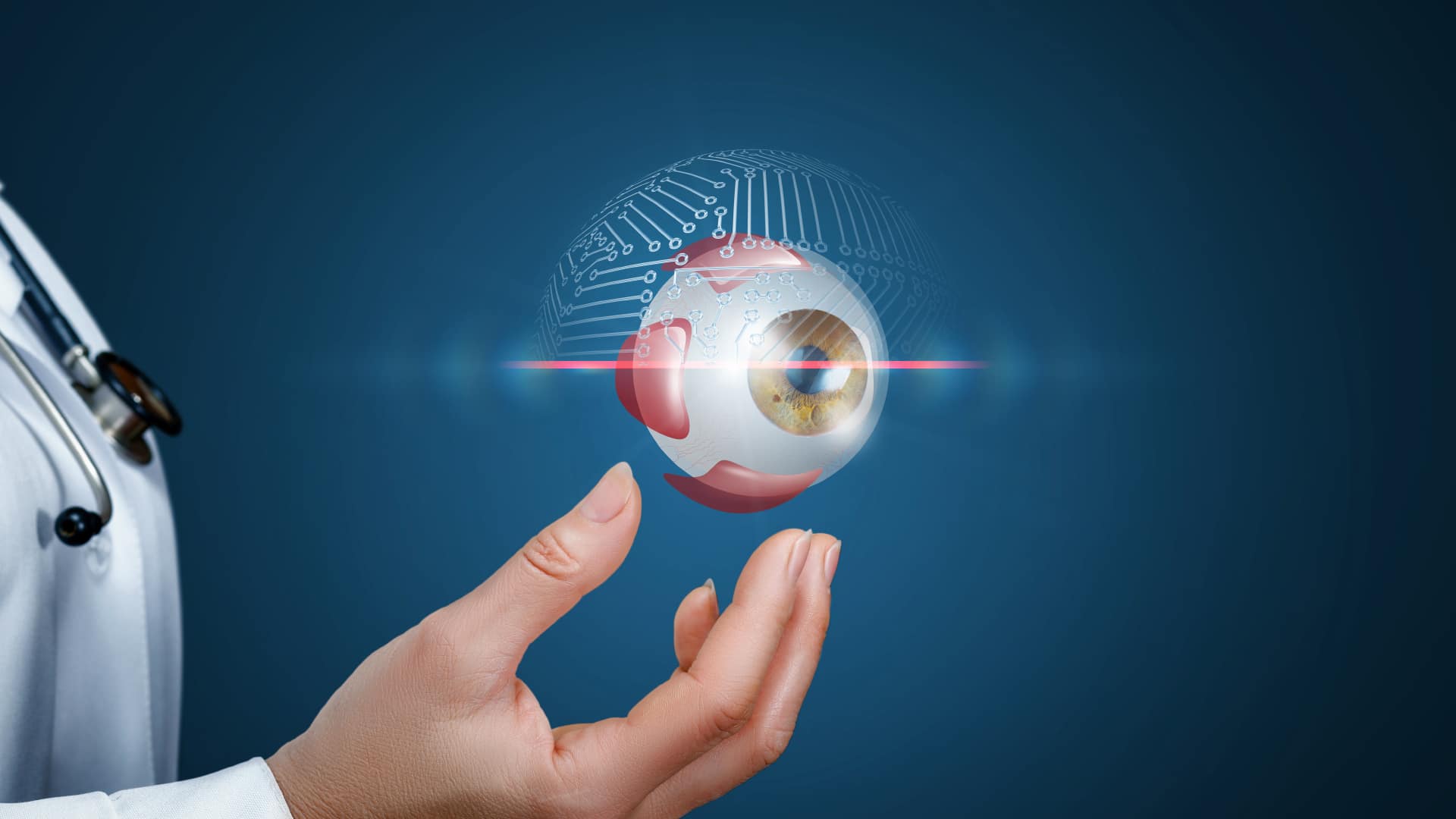The retina is a vital part of our visual system, playing a crucial role in allowing us to see and interpret the world around us. Understanding its function, common disorders that can affect it, and the available treatments is essential for maintaining good retinal health. In this comprehensive guide, we will delve deeper into the intricacies of retinal treatments and care, exploring the various aspects that go beyond the surface.
Understanding the Function of the Retina
Before delving into the world of retinal eye disorders and treatments, it’s important to understand the fundamental role that the retina plays in vision. The retina is a thin layer of tissue located at the back of the eye. Its primary function is to convert light into signals that can be interpreted by the brain, allowing us to perceive the world visually.
The retina is an incredibly intricate and complex structure, composed of multiple layers of specialized cells and tissues. At the very back of the retina lies the macula, a small area responsible for central vision and high visual acuity. The macula contains a high concentration of cones, the photoreceptor cells responsible for color vision and sharp central vision.
Surrounding the macula are the peripheral regions of the retina, which contain a higher density of rods, the photoreceptor cells responsible for peripheral and night vision. This distribution of rods and cones throughout the retina allows for a wide range of visual capabilities, from detecting faint objects in low light conditions to perceiving vibrant colors in bright environments.
See Also: Expert Insights on Retinal Diseases and Treatments
The Role of the Retina in Vision
The retina contains millions of specialized cells called photoreceptors, which are responsible for capturing light and transmitting electrical signals to the brain through the optic nerve. There are two main types of photoreceptors: rods and cones. Rods are more sensitive to dim light and are responsible for peripheral and night vision, while cones are responsible for color vision and sharp central vision.

When light enters the eye, it passes through the cornea and lens, which help to focus the light onto the retina. The photoreceptor cells in the retina then capture the light and convert it into electrical signals. These signals are then processed and transmitted through a complex network of cells within the retina, including bipolar cells and ganglion cells, before being sent to the brain for interpretation.
By deciphering the light signals received from the retina, the brain creates the images that we see. This intricate process allows us to perceive the world in all its visual glory, from the vibrant colors of a sunset to the intricate details of a flower petal.
Common Retinal Disorders
Retinal disorders can affect people of all ages, from infants to the elderly. Some common retinal disorders include:
- Age-related macular degeneration (AMD)
- Diabetic retinopathy
- Retinal detachment
- Retinal vein occlusion
- Retinitis pigmentosa
Each of these disorders has its unique impact on the retina and requires specific treatments and care to manage effectively.
Age-related macular degeneration (AMD) is a progressive condition that affects the macula, leading to a gradual loss of central vision. It is one of the leading causes of vision loss in individuals over the age of 50. Diabetic retinopathy, on the other hand, is a complication of diabetes that affects the blood vessels in the retina, potentially leading to vision loss if left untreated.
Retinal detachment occurs when the retina becomes separated from its underlying supportive tissue. This condition is considered a medical emergency and requires immediate attention to prevent permanent vision loss. Retinal vein occlusion, on the other hand, is a blockage of the veins that carry blood away from the retina, leading to vision loss in the affected area.
Retinitis pigmentosa is a group of genetic disorders that cause a gradual degeneration of the photoreceptor cells in the retina. This can result in night blindness, tunnel vision, and, in severe cases, complete blindness.
Understanding these common retinal disorders is crucial for early detection, proper diagnosis, and effective management. Regular eye examinations and prompt medical attention are essential for maintaining optimal retinal health and preserving vision.
An Overview of Retinal Treatments
When it comes to treating retinal disorders, various options are available depending on the specific condition and its severity.
Retinal disorders can have a significant impact on vision and overall eye health. Fortunately, there are both surgical and non-surgical treatments available to address these conditions and improve visual outcomes.
Surgical Treatments for Retinal Disorders
In cases where surgical intervention is necessary, several procedures can be performed to repair and restore the retina. These surgical treatments are often effective in improving vision and preventing further damage to the retina.
- Vitrectomy: A vitrectomy is a surgical procedure where the vitreous gel inside the eye is removed and replaced with a gas or silicone oil bubble. This procedure helps stabilize the retina and allows for better visual outcomes. Vitrectomy is commonly performed for conditions such as retinal detachment, macular hole, and diabetic retinopathy.
- Retinal detachment surgery: Retinal detachment occurs when the retina separates from the underlying tissue. This condition requires immediate surgical intervention to reattach the retina and restore vision. There are different techniques used in retinal detachment surgery, including laser photocoagulation and pneumatic retinopexy.
- Macular hole surgery: A macular hole is a small hole that develops in the macula, the central part of the retina responsible for sharp, central vision. Macular hole surgery aims to close the hole and restore visual function.
Non-Surgical Treatments for Retinal Disorders
Not all retinal disorders require invasive surgical procedures. Non-surgical treatments can be effective in managing certain conditions and preventing further vision loss.
- Intravitreal injections: Intravitreal injections involve the direct injection of medications into the eye. This method allows for targeted delivery of drugs to the retina, reducing inflammation and preventing further damage. Anti-VEGF drugs, which inhibit the growth of abnormal blood vessels, are commonly used in the treatment of conditions such as age-related macular degeneration and diabetic retinopathy. Steroids may also be injected to reduce inflammation and swelling.
- Photocoagulation: Photocoagulation is a laser therapy that can be used to treat retinal disorders. The laser is used to seal leaking blood vessels or destroy abnormal tissue in the retina. This treatment is often used for conditions such as diabetic retinopathy and retinal vein occlusion.
- Oral medications: Some retinal disorders can be managed with oral medications that aim to control underlying conditions. For example, patients with diabetic retinopathy may be prescribed medications to control blood sugar levels and blood pressure. By managing these underlying conditions, the progression of retinal damage can be slowed or prevented.
It is important to note that the choice of treatment for retinal disorders depends on various factors, including the specific condition, its severity, and the individual patient’s overall health. A comprehensive evaluation by an ophthalmologist or retina specialist is essential to determine the most appropriate treatment plan for each patient.

The Importance of Regular Retinal Check-ups
Regular retinal check-ups play a vital role in maintaining good retinal health and detecting any potential disorders at an early stage.
Detecting Retinal Disorders Early
Early detection of retinal disorders is crucial for preventing further damage and preserving visual function. Regular eye examinations, including a thorough retinal examination, can help identify any abnormalities or signs of potential retinal disorders before they progress.
During a retinal check-up, an ophthalmologist or optometrist will examine the retina using specialized tools and instruments, such as a slit lamp or ophthalmoscope, to evaluate its condition and identify any signs of disease.
Maintaining Retinal Health
Aside from early detection, regular retinal check-ups also provide an opportunity to assess overall retinal health and make recommendations for maintaining optimal visual function. Lifestyle factors, such as proper nutrition, regular exercise, and avoiding smoking, can contribute to good retinal health and reduce the risk of certain retinal disorders.

Living with Retinal Disorders
Living with a retinal disorder can present unique challenges, both physically and emotionally. However, there are ways to adapt and make adjustments to improve quality of life.
Lifestyle Adjustments for Retinal Health
For individuals with retinal disorders, making certain lifestyle adjustments can help manage symptoms and maintain overall retinal health. These adjustments may include:
- Using assistive devices: Devices such as magnifiers, special glasses, or screen readers can assist individuals with low vision in everyday activities.
- Optimizing lighting conditions: Proper lighting can improve visual clarity, reduce eye strain, and enhance contrast, making it easier for individuals with retinal disorders to see.
- Maintaining a healthy lifestyle: A healthy diet, regular exercise, and managing underlying health conditions can all contribute to better retinal health and overall well-being.
Coping with Vision Loss
Vision loss caused by retinal disorders can significantly impact daily life and require emotional and psychological adjustment. Seeking support from vision rehabilitation services, joining support groups, or counseling can all help individuals cope with the challenges of living with visual impairments.
Future Developments in Retinal Care
Advancements in technology and ongoing research are paving the way for exciting developments in the field of retinal care.
Advances in Retinal Surgery
New surgical techniques, such as minimally invasive procedures and robot-assisted surgery, are being explored to enhance the precision and effectiveness of retinal surgeries. These advancements aim to improve patient outcomes and reduce recovery times.
Promising Research in Retinal Treatments
Research into novel treatment options, such as gene therapies and stem cell therapies, holds promise for the future of retinal care. These cutting-edge therapies aim to restore or replace damaged retinal cells, potentially offering new avenues for treating previously untreatable retinal disorders.
In conclusion, understanding retinal treatments and care goes far beyond the surface. By recognizing the importance of the retina, familiarizing ourselves with common retinal disorders, and staying informed about the available treatments and future developments, we can take proactive steps to ensure long-lasting retinal health and preserve our precious gift of vision.


